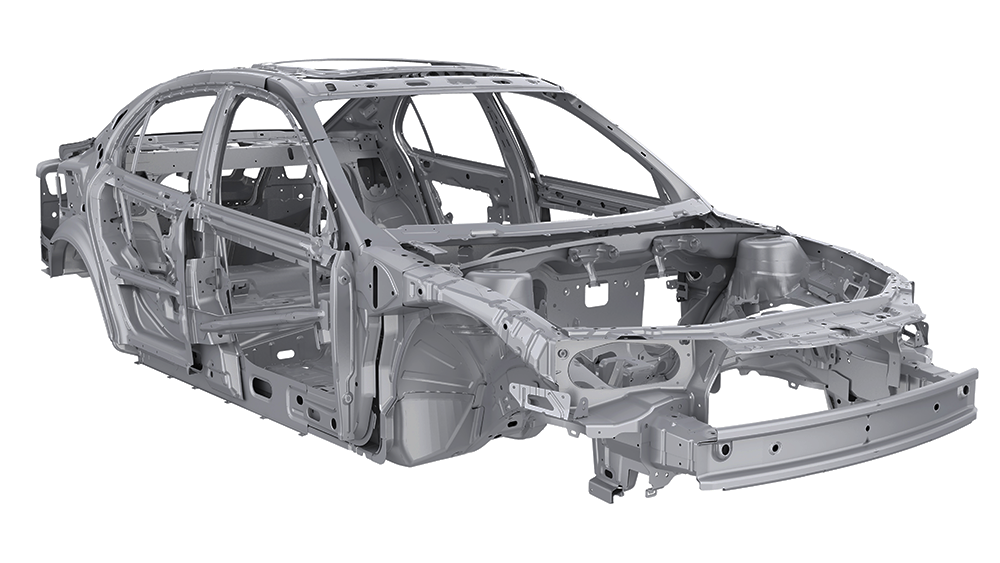Brand Journalism
Brand Journalism
2023-02-27
Carbon Fiber in Everyday Life (II).

Netflix’s popular series ‘Formula 1: Drive to Survive’ will soon release its fifth season. The documentary-like series has gained traction across the world as soon as it hit the screen. The series gives a behind-the-scenes look at Formula 1 drivers and their teams who are competing for the fastest race speed.
Of course, the scenes offer captivating glimpses of the world's most prestigious motor racing competition but what has drawn people to this show must also have to do with a series of supercars it features.
Formula 1 racing cars are the epitome of cutting-edge technology and science with all the investments made for one thousandth of a second that literally makes or breaks the outcome of a race on the racing circuit.
Various materials are applied in manufacturing the racing cars for the strength and super lightweight. But above all, carbon fiber is one material that you need to pay extra attention to. Carbon fiber with over 92 percent carbon, it is ten times stronger and four times lighter in weight than steel. Hyosung Advanced Materials has developed and has been mass producing Korea’s first carbon fiber brand TANSOME® which has been rapidly gaining traction worldwide.

Previously carbon fiber was applied mainly to aeronautical and space areas when it was first developed, but it is now widely used in various areas such as high-pressure tanks for hydrogen and CNG, vessels, wind turbines, construction beams, laptop cases and medical devices. Automobile industry and sports are areas where general consumers would meet carbon fiber in everyday life.

Lighter in weight but safer for drivers and passengers
In the early 1980s when carbon fiber application was confined to aeronautical and space areas, F1 racing cars started to adopt carbon fiber in their monocoque cell design and this was the very beginning of carbon-fiber race cars.
The monocoque is a construction of external skin of racing cars except for tires and frames. Carbon fiber-reinforced monocoque is lighter in weight but is much stronger, which helps to better protect the driver. It works as a shield that protects the driver at the possible moment of collision or crash taking place while the car races at a speed of over 200km.
Before carbon fiber was brought in, 20 racing car drivers were killed on the racing circuit over the period of two decades. Upon carbon fiber’s emergence, however, the number drastically declined to 3 over thirty years of time. The number speaks for itself, doesn’t it?
That’s not the end of the story. When braking in Formula 1 the discs' temperature can actually reach peaks of over 1,000 degrees centigrade and this is where carbon fiber comes in very handy. Recently, various parts are also increasingly being reinforced with carbon fiber including car platform, muffler, center fascia, bonnet and handle.
TANSOME® in luxury cars
Luxury cars as well are increasingly adopting carbon fiber. Advanced technology which has not yet been applied to mass-produced vehicles is opted for luxury cars. This is where egos of car makers butt heads against each other. For this reason, we often see a new technology adopted in the F1 almost immediately adopted by luxury cars too.
Many familiar luxury car brands are using Hyosung TANSOME® for their structure and intermediate materials like prepreg and drawing.
Of course, carbon fiber is not the preserve of F1 or luxury cars. It has been increasingly used in ‘everyday’ cars too. A global automobile brand has adopted carbon fiber-reinforced monocoque cell for two of its passenger vehicles and found around 39% reduction in the vehicle weight compared to the ones with traditional steel panels.
Carbon fiber in sports and leisure industry
This lighter and stronger material is also welcomed in sports and leisure industry. Fabrics incorporating carbon fiber are lightweight and highly elastic and thus provide comfort and help improve performance.
Carbon fiber fabrics naturally come in black twill weave patterns either glossy or matte and these signature patterns of carbon fiber add a high-end and sporty look to sportswear products.
In turn, sports wears and products made of carbon fiber offer very practical yet stylish looks thanks to the timeless and trendy color of black and the twill weave patterns. This style has received rave reviews from younger generations who enjoy sports.
Carbon fiber to boost up performance
Did you know that tennis and surfing, both of which are gaining popularity among Gen Z have a thing or two with carbon fibers as well: tennis rackets and surfing boards are made of carbon fiber? Paddle shafts, bicycles, yachts, snowboards, golf clubs, hockey sticks, and bow guns also have carbon fibers.

Take tennis rackets for instance. Carbon fiber tennis rackets are lighter, allowing players to hit the ball faster while also offering a firmer grip. They also come in longer handle length and wider racket width which offer more maneuverability and control.
Carbon fiber bikes are much lighter than other material equivalents and they gave the feeling of effortless climbing a steep hill or sharp turns. The superb strength-to-weight ratio can be a key to reducing the speed record. Carbon golf shafts are lighter to cause less resistance and more flexure, resulting in faster and more consistent ball speed.
Its unique features like increased levels of tensile strength, water/wind resistance, and thermal conductivity variation against temperature make carbon fiber the best material for water sports as well as winter sports such as skiing and snowboarding that require high-performance equipment.
Carbon fiber, now an everyday thing
Hyosung concluded a sponsorship agreement with the Korea Bobsleigh and Skeleton Federation that performed pretty well at the 2018 Pyeongchang Winter Olympics for the 2017-2018 season and the 2018-2019 season to provide extensive support including funding and technology. This also included the company’s offering of TANSOME® and aramid fiber for the development of gear and equipment.
Once being confined to aerospace or racing cars, carbon fiber has now become almost an everyday thing to be found in areas encompassing automobiles, and sports gear and equipment. With its properties of ultimate tensile strength, lightweight and high modulus property, carbon fiber is gaining more prominence in our everyday life.
We have reached a point where we can’t go back to days without carbon fiber in our lives. Hyosung Advanced Materials that has developed Korea’s first carbon fiber and succeeded in commercialization is now growing itself into a global leading player on the back of its production capacity and technological advancement.
With its unwavering commitment to expanding carbon fiber’s application in our everyday lives, Hyosung Advanced Materials is to take the life of humanity as a whole to the next level by bringing more comfort, convenience and safety. Please stay tuned for updates on Hyosung Advanced Materials’ progress as we continue to further broaden our carbon fiber horizon.